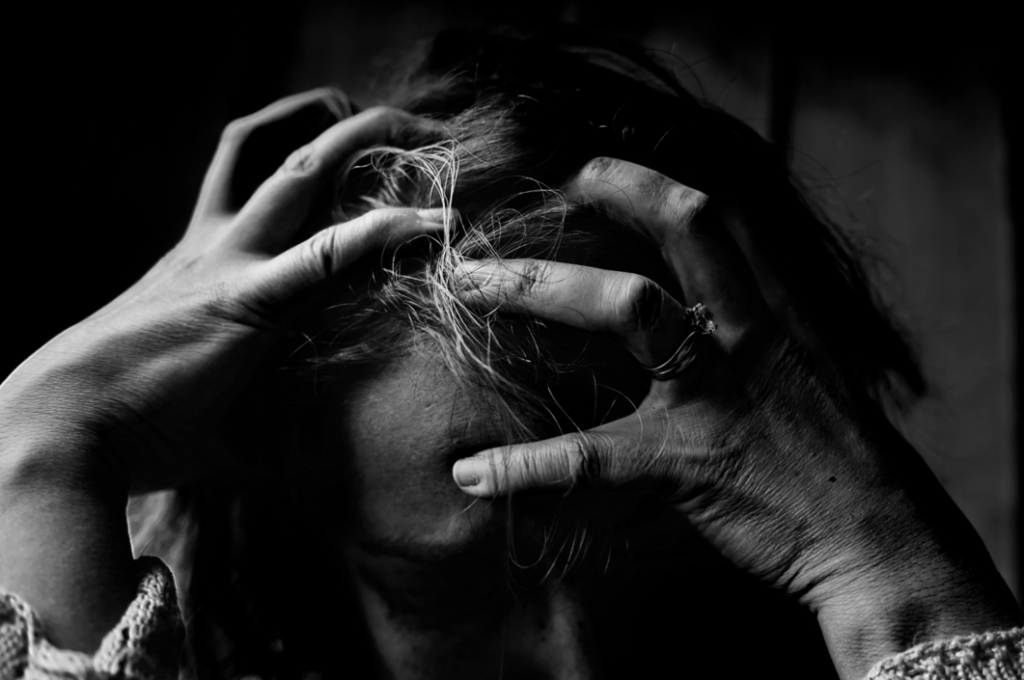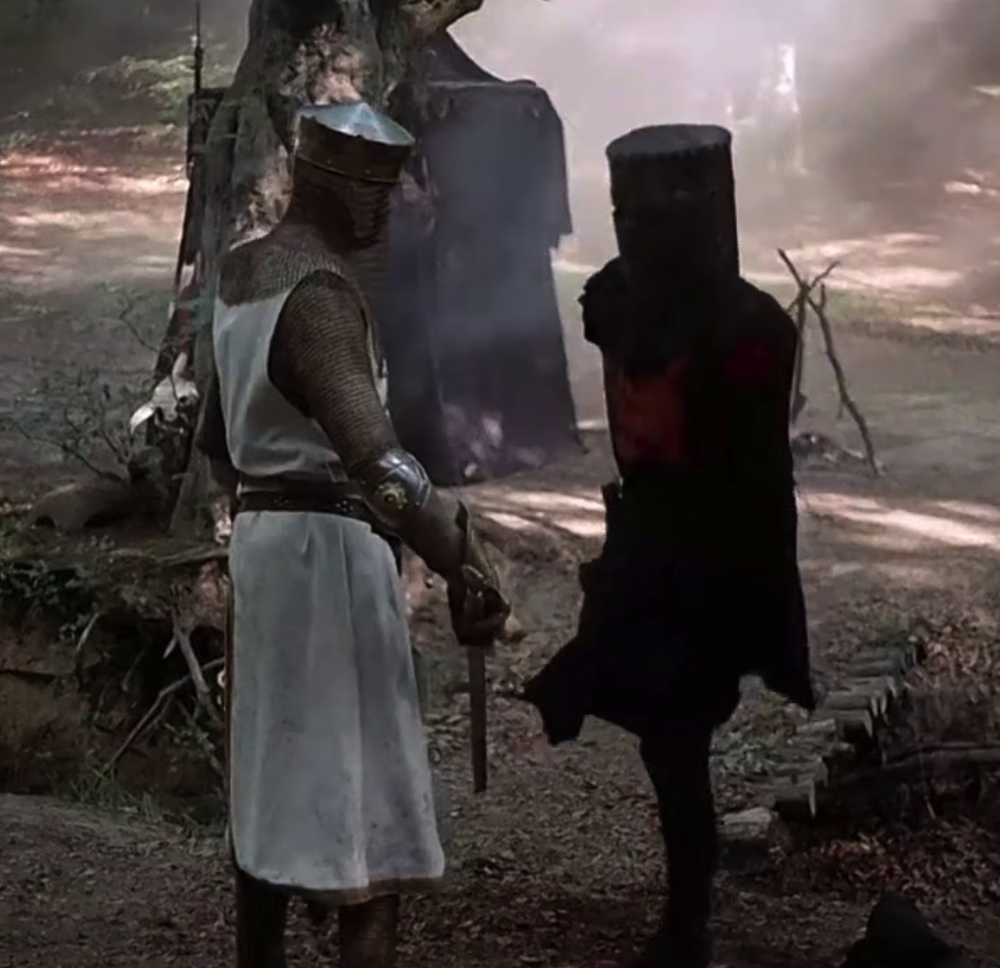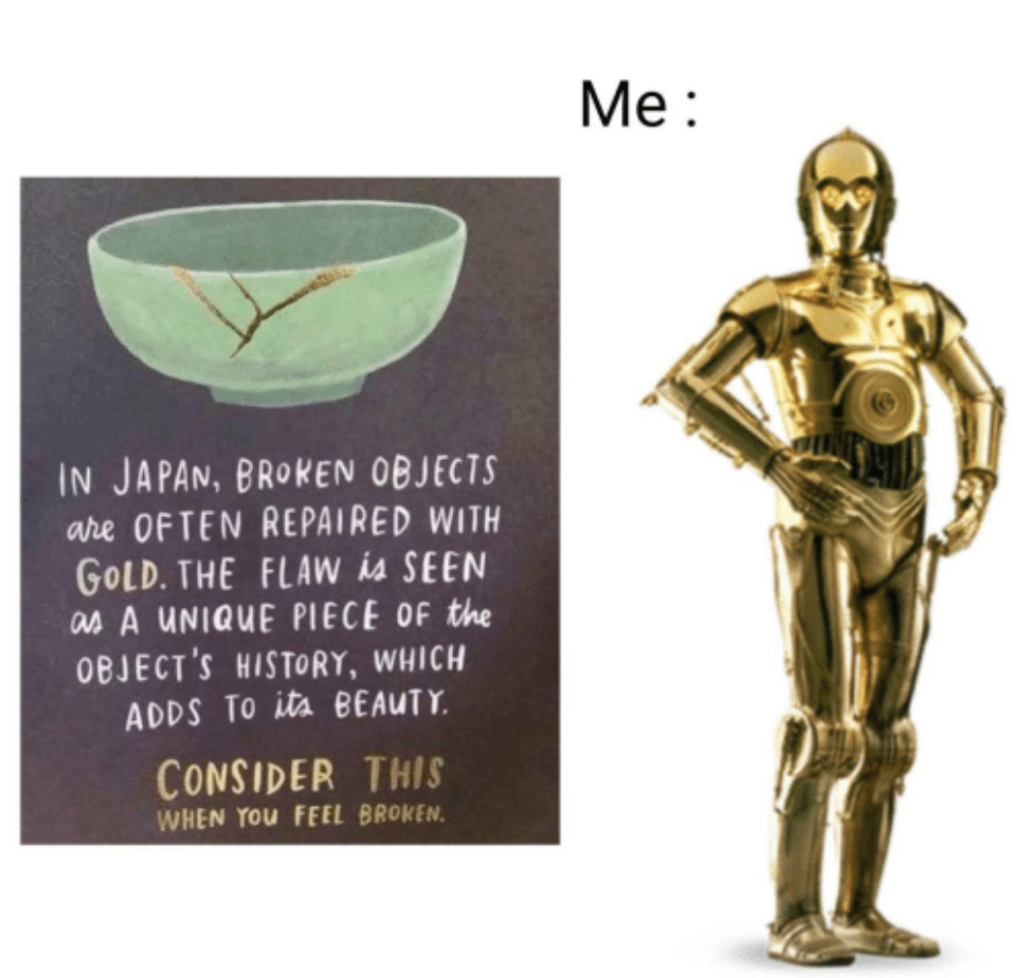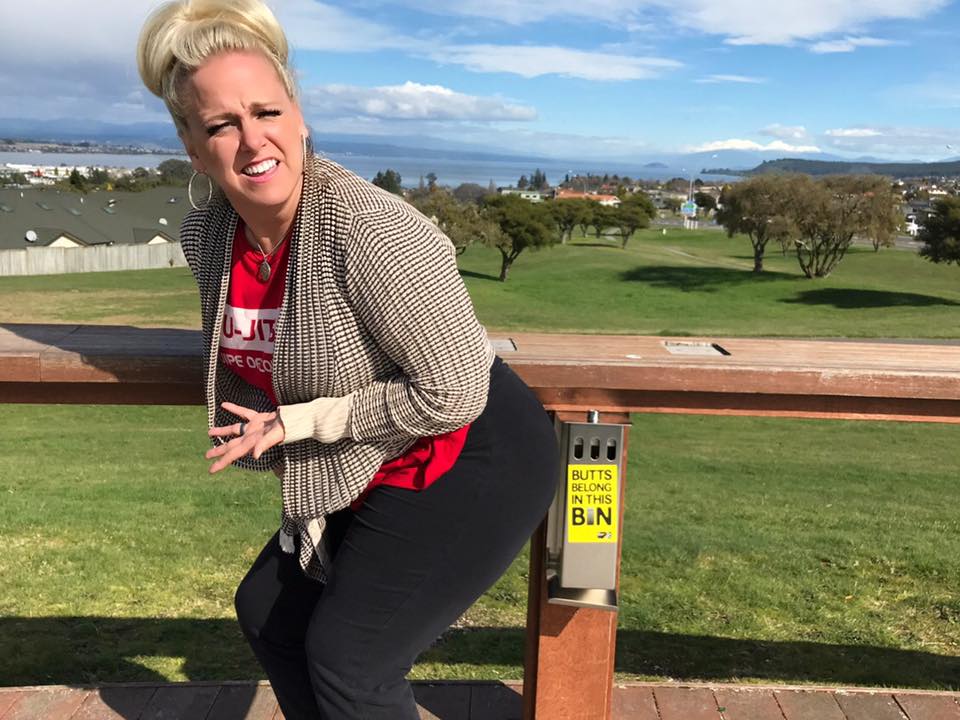
The wound is critical for creating dimensional characters and, thus layered stories. Ah, the masks we wear. We all have them because it’s impossible to be fully human and devoid of cracks.
We all have a wound. In fact if you make it past childhood you’re probably carrying around more than carry-on baggage (more than ONE wound). Yet, therein lies the conundrum for those who long to become writers. We’re all cracked, damaged, dinged yet simultaneously bombarded by countless conflicting messages.
It’s okay to cry, darling. Just next time wear the waterproof mascara. You’re a mess.
Many of us are the walking wounded, encouraged to embrace our flaws, experience all our emotions…but then cover them up because no one wants to see that. Jeez!
This ‘logic’ is absurd enough in life, but for authors we must choose the painful path if we hope to write the great stories, the ones that change people and endure. Perfect, flawless, normal and well-adjusted spell death for fiction. Superb stories provide a safe place for readers to ‘feel and heal’ and our job is to deliver that.
Yet, this comes at a price. I know! Always a catch.
Funny Thing About Pain

I remember the first time I broke a bone. I was barely four. What stands out most is it didn’t hurt. At all.
I remember gaping at my left arm in a spiffy S shape, unable to wrap my head around why there was NO pain. After many years and many more injuries I learned the wounds that hurt were never as bad as ones that didn’t.
Of course this is basic physiology. When an injury is bad enough it overloads the pain centers of the brain, short-circuiting our ability to feel anything. This gives time for the sympathetic nervous system to flood the body with hormones to keep us alive.
Heart rate slows, blood pressure drops, and our endocrine system unleashes a tsunami of fight or flight hormones. All these physiological responses—in the meantime—are necessary for us to survive long enough to do something about the wound.
If, however, the shock is not dealt with, the victim will ironically die from the very mechanism designed to keep the body alive.
Emotionally Walking Wounded

Something similar happens to us when we experience emotional trauma. Emotional disconnection—also known as denial—is the mental equivalent of ‘being in shock.’
Our body never intended ‘denial’ to be a permanent solution, just a stopgap to protect our psyche from overload. It’s the brain’s way of protecting us from emotional implosion (I.e. a nervous breakdown or psychotic break).
Like the body lowers blood pressure and heart rate to keep us from bleeding to death, the mind dulls our emotions and minds to keep us from unraveling. There will (should) be a time and place to face the trauma, but drinking demons from a fire hose is not our brain’s first choice.
The trouble, however, is that though we need to face these traumas, denial can become a ‘comfortable enough’ purgatory.
This is where our MC should be in the beginning. There is a wound and they are in denial. The story is what will bring about authentic healing.
Our characters (like their creators) have become masters at hiding, stuffing or numbing negative emotions into submission. Maybe they’ve endured their wounds so long they’re unaware the wounds exist because pain is their ‘normal.’
Dare to Look for the Wound

As authors, we’re wise to appreciate that readers read for the same reasons writers write. Wounds. This is where things get…tricky. Many writers write as a way to treat our own wounds. Face it, writing fiction is way cheaper than a good shrink or solid criminal defense attorney.
Murdering imaginary people is legal 😀 . *double-checks on Google* Yep, totes legal.
Many of us learned in high school it was safer to bleed in the library because the sharks were in the cafeteria. Trouble is, being afraid to face or admit we’re anything but perfect makes for some seriously dull as crap ‘stories.’
Yet, I posit this:
All fiction is about a wound colliding with a core problem in need of resolution.
Fiction (stories) must possess both wounds and a core problem. Ideally, the wound and the core story problem will somehow be related.
If we only have problems, we don’t have a story. There is no drama, only melodrama. We have bad situation after bad situation after bad situation. Characters passively flung like flotsam and jetsam on the cruel currents of Life’s Unfair.
*yawns*
When our character(s) wax rhapsodic about inner demons (sans core problem in need of resolution), that isn’t fiction either. It’s comes across as self-indulgence, journaling, whining, lecturing or even pontificating.
Why? Because fiction is the wrong medium for solely discussing wounds. Essays? Self-help? Blogs 😀
Cool…maybe. As fiction? Snoozefest.
Writers KNOW the Wound

We are all emotionally messed up to some degree. If you’re not at all messed up then you’re a) a robot b) in denial c) a sociopath d) not fit to be a writer. There is no normal. ‘Normal’ is a setting on the dishwasher. That and normal is also…normal (a.k.a. boring), ergo terrible fiction.
Readers cannot connect with perfect, but they will connect with wounds. This means we writers, uh, need to connect via wounds.
Yeah.
Also, the wounds we will write the best *tugs collar* will likely be the ones we hide deepest and….*mutters low* the ones we fear most.
Remember…
Dragons always guard the treasure. The larger the treasure, the bigger the beast. Emotional damage in fiction is GOLD.
This means, my relentless drive to hone my skills as an author has been a petal-lined path with unicorns, rainbows and daily facials.
Okay that was a total lie. WHAT? I’m a writer. It’s what we do.
I had to face I am an OCD control freak, a rabidly critical perfectionist, and a Type A+ because Type As didn’t do the extra credit #Slackers.
So Many Masks to Hide the Wound
And so little time. If we want to excel at writing, first things first. Write what you know.
What are our masks? What wounds are we hiding? If we are brave enough to do this hard work, this is when the great stories happen (which we’ll talk about in another post).
For me? My primary go-to mask is the clown. Shocking! I KNOW!

Writer brains. Sigh.
Which humor is wonderful. I love to laugh and love making other people laugh even more. The problem, however, is that I use comedy to deflect, minimize, hide and, if pushed?
Fight dirty.
Alas, there’s a good reason comedians have such a high suicide rate. They might be the funniest person in the room, but they’re often the most wounded. Jokes are a fantastic smokescreen for pain.
This means most other people are oblivious to how deeply the ‘clown’ is hurting (I.e. Robin Williams). The self-defense mechanism ends up being the comic’s undoing.
Case in point, I was once in a horrible accident and had all the EMTs cracking up as they prepped me for the ambulance. My shame for actually ‘needing help’ spilled out in grand comedy, almost to my detriment.
The first responders initially had no idea how badly wounded I really was because I kept them in stitches…since me needing stitches was *shivers* such a burden.
Though I hate admitting this, I’m fairly sure if I were shot I would either a) make jokes or b) profusely apologize for the mess as I tried to clean it up while stemming the bleeding…without using the good towels c) try to do surgery on myself with a glue gun and Batman stickers to save money or d) all of the above.
I learned to hide my weakness, needs, hurts behind a mask of humor and still do. When that doesn’t work? I have a vast collection of other guises to fake that everything’s fine.
Also, this is opening my eyes to others. What are their masks and what wounds are still bleeding beneath?
The WHY Reveals the Wound

I’m challenging you guys to embrace the wound because humans are born of blood and so are the best characters. It’s what makes them feel so real. Sure we can have a tattooed felon or a homeless prostitute as an MC but that damage is more obvious. Those types of characters also won’t work in some genres.
Let’s take an MC who’s a trauma surgeon determined to save lives. Great. How do we keep this super perfect character from being one-dimensional and boring?
Go for the WHY. WHY did she become a surgeon in the first place? Was she hoping to finally earn praise from emotionally absent parents? Maybe she’s competing with a sibling who always seems to outdo her? Does she hide in her profession because she can’t handle the mess that is her home life?
Dig deep.
WHY does your heroine need to make every holiday storybook perfect? What propels your hero run into burning buildings? Is there a reason your cupcake baker is an OCD perfectionist?
Why do they do what they do, good and bad? They do all this because they are compensating for a hidden wound.
And if not, they’re likely dull as dirt.
Wounds will enhance all fiction. ALL of it.
Also, when we know and explore the wound, PLOTTING is MUCH easier because we know precisely what problem will create the most stress and force the most change.
What Are Your Thoughts?
Have you been afraid to write in a way that makes you feel vulnerable? Afraid to feel? I know I have. Working on it. What novels, series or movies resonated with you most? Looking back, did you connect because of what we discussed today? Have you used your fiction to work on your own masks, wounds, issues?
What are YOUR favorite go-to masks? Why do they help? How do they backfire?
I love hearing from you, and I am NOT above BRIBERY!
What do you WIN? For the month of NOVEMBER, for everyone who leaves a comment, I will put your name in a hat. If you comment and link back to my blog on your blog, you get your name in the hat twice. What do you win? The unvarnished truth from yours truly. I will pick a winner once a month and it will be a critique of the first 20 pages of your novel, or your query letter, or your synopsis (5 pages or less).
October’s winner is jguenther5 and September’s winner is Kate Lavender. Apologies for the delay. Been neck deep fixing tech issues. Please email your 20 pages (5000 words), double-spaced, one-inch margins. Times New Roman font, 12 point, to kristen at wana intl dot com with CONTEST WINNER is caps so I can find you in the monstrosity that is my email.
Classes
The Edge: How to Write Mystery, Suspense & Thriller is available ON DEMAND (sign up HERE and use Thrill10 for $10 off). The recording turned out FANTASTIC, so check it out.








14 comments
4 pings
Skip to comment form
I often simply scan your posts. This one I read to the end. Thanks.
Thanks Kristen, this makes sense of a whole load of things for me, and will encourage me to go deeper with my protagonist. She’s going to wish she’d never been created!
A brilliant post, I have read this advice many times in many guises but this resounded with me in a way others didn’t. Thank you. My mask, a quiet, lonely corner and hid my face. Or a good book!
Kristen, I’ve been on your subscription list for years and your posts never disappoint! This one especially resonated with me. I went through a trauma where I was numb for a very long time. Cracked jokes at the funeral to cope, kept myself over-scheduled so I didn’t have to be alone with my emotions. I translated this experience into my character’s experience in my first novel. It’s a mystery with romantic elements but in the background is her journey and personal evolution through grief. I have a wise character that shepherds her through the process and realized at the end of the book that the characters were both elements of myself: the me trudging through the fresh pain and the seasoned me reaching through time to hold my hand on the dark path. My hope is that my writing will always help someone navigate something difficult in life; give them tools to cope or at least the hope that there’s another side to come through. I’m submitting this post wrapped in imaginary four-leaf clovers because I would LOVE your unvarnished truth about my first 5,000 words, where my character is right in the belly of the beast of grief so to speak. Either way, thank you for a thought-provoking post! M.
Another insightful read, and of course a pleasure.
One thought (just between us OCD types): you said story problems without wounds only make melodrama. I think that’s true, but only because problems on their own lead to simple problem-solving — which makes a story “dull as ditchwater,” like you said. So the story could inflate the problems until they reach melodrama, or combine the problem with an actual wound and let the story be what happens between them.
Ouch. I see now how I need to make the hurt deeper for my MC in my most recent WIP. (Hey, look at me using the acronyms!)
Author
Go you! Yes, it takes time to get the lingo, LOL. I remember early days of, “Um, what’s a WIP? POV? Prisoners of Vietnam????”
Mary Jo Putney once said it all–“Research is hard. Torturing heroes is fun.”
Awesome post, KL, thanks!
Thank you for this very thought-provoking, post. It;s been a long time since I read you. I don’t know why, but i enjoy your writing
Excellent post. I’m always interested in learning more about the craft, especially when I’ve been writing my characters a certain way and not realising why. Now I know why. Thank you 🙂 Current WIP has 3 MCs. Two have wounds so deep they’re almost in half. But now you’ve brought this to my attention, I realise the third one is breezing through life and has found her inner calm way too soon! Time to put her up that tree and throw a few rocks.
Excellent post. I love continually learning about craft, especially when I’ve been writing characters a certain way and not realising why. Now I do. Thank you. My WIP has three MCs. Two are so wounded they’re almost cut in half. But now I see the third has been breezing through life and has found her inner peace way too soon. Time to put her up that tree and throw a few rocks at her. I’ll tell her you sent them. 🙂
Author
Apologies for the delay. WP makes me hand-approve comments and I can’t always do it immediately, I am THRILLED this post helped!
I think the difficulty in dealing with wounds, especially new wounds you create, is dwelling too long on the trauma. I found myself drowning in that when I read the second and third Hunger Games. It was the only part that truly bored me and I took that lesson to heart. The balance is the struggle.
I am also a clown who tries to be self-sufficient. No I don’t need no epidural. (Ha! Yeah I did! Fool!) Sarcasm is in my assorted toolbox as well. In the end that last glass of wine will usually take me out. We all need a good cry now and then.
Thanks for the post! I enjoyed it and it has given me a bit to think over for my characters.
[…] The Wound: How Pain Can Deepen Our Fiction […]
[…] In writing advice news, Disha Walia has excellent advice on how to manage a skip forward in time, and Kristen Lamb has a fantastic post on how wounds are an important tool for making your characters more complex and realistic. […]
[…] The Wound: How Pain Can Deepen Our Fiction […]
[…] to do this? We use the character triad. The Wound, because pain deepens our stories. Then, there is the Blindspot and, finally, Shame. All three of […]